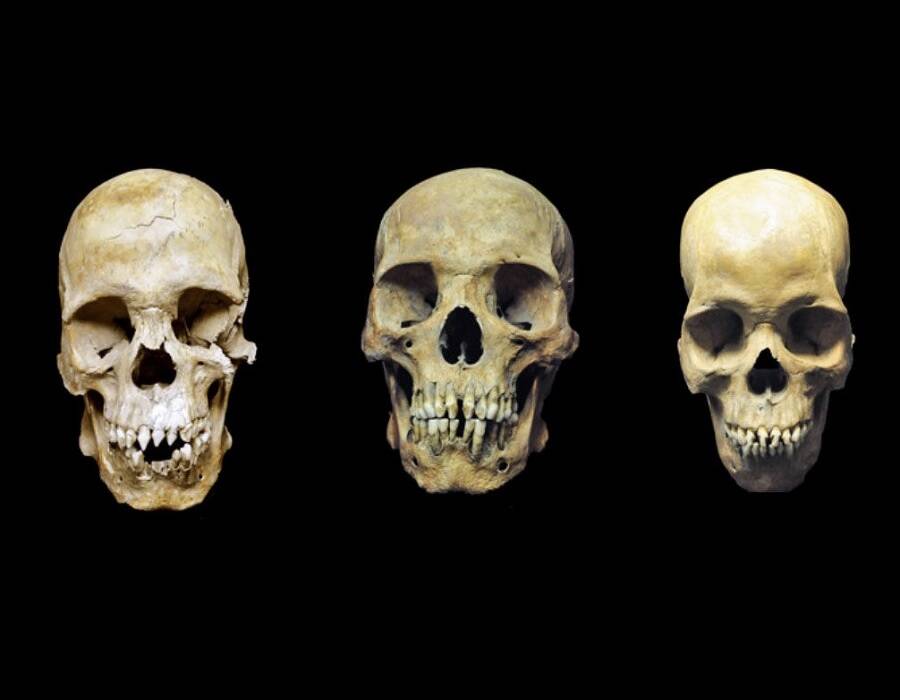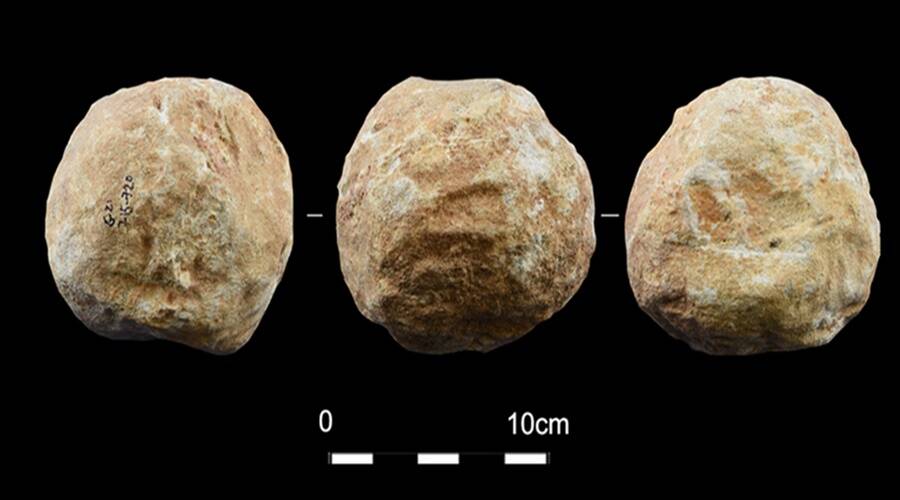Remains of early transatlantic slave trade victims analyzed, ancient English mill put back into use, mystery of 2-million-year-old stone ball tools solved.
500-Year-Old Skeletons Unearthed In Mexico Reveal The Horrors Of The Transatlantic Slave Trade

San José de los Naturales Osteology LaboratoryThe 500-year-old skulls of three presumed slaves unearthed in Mexico City.
Found in the cemetery of a former Mexico City hospital dating back to the 1530s, several uncovered skeletons belonged to what were likely some of the transatlantic slave trade’s very first victims. New research shows that they suffered everything from broken bones to gunshots, and all of them had their teeth filed down to sharp points.
They’d also endured so much disease, malnutrition, and physical stress from harsh labor that their bones were noticeably thinner than they should have been.
Read on here.
Ancient British Mill-Turned-Museum Is Making Flour Again To Help With COVID-19 Shortage

Sturminster Newton MuseumThe earliest record of the Sturminster Newton Mill dates to 1086.
The Sturminster Newton Mill in Dorset, England became a museum once operations ceased in 1970, but has remarkably returned to its former flour-making glory to meet increased demand during the COVID-19 pandemic.
The mill was first mentioned among 6,000 flour mills in the Doomsday Book of 1086. The building, which sits on the River Stour and was originally built during the Anglo-Saxon period in 1016, was last reconstructed in the 18th century.
See how it’s now being put back into use here.
Scientists Finally Unlock Mystery Of 2-Million-Year-Old Stone Balls Found At Sites Around The World

Assaf et al.A mysterious haul of stone balls was uncovered in the Qesem Cave archaeological site in Israel.
For the longest time, archaeologists were stumped over the use of simplistic prehistoric tools found in caves around the world: stone balls.
Researchers have uncovered these mysterious tools dating back to 2 million years ago inside caves in Asia, Africa, and Europe. Clearly, these artifacts had been used by our ancestors — but for what exactly researchers could not figure out until now.
Dig deeper here.





